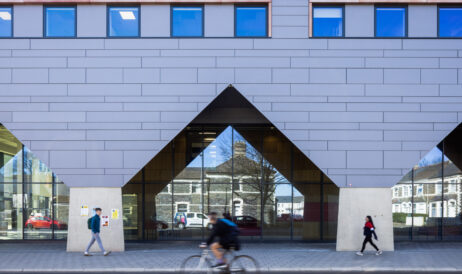Workplace design specialists Toni Riddiford and Glynn White contemplate the deeper consequences of COVID-19, foreseeing a fundamental shift in office life and the relationship between employers and employees.

Unmoored from the workplace as a result of lockdown and having looked a ravaging pandemic in the eye, employees’ routines have been turned upside down. As they find their sea legs, however, it is beginning to dawn on them that they have more agency than previously thought. If employers want to attract and retain their talent, they must accommodate this new mood.
After the COVID-19 storm, a fog of uncertainty. For workplace managers, human resources directors, real estate investors and agents, the economic consequences of the crisis are a looming unknown, threatening financial and organisational wreckage. How can they maintain the office culture with social distancing? How should this affect the design and configuration of the office? And how will their markets be affected?
These important questions should dominate future scenario planning, informed by the success of video-conferencing tech and the discovery that, while it has not always been easy, working from home is more than possible. The promise of the agile, flexible, office-less worker has bloomed into an everyday norm.
It seems likely that these factors will lead to permanent structural and organisational changes in the way offices are operated. That is not likely to be the end of it, either. The crisis has wrought other more fundamental changes, with more far-reaching consequences.
Cast adrift and powerless in the doldrums of lockdown, employees have had the space, time, and authentic lived experience to reflect on their priorities.
For every surreal change of routine, there have been compensating upsides: work does not depend on your physical presence; work is about getting the job done rather than being seen to put in the hours; the daily commute is not necessary; a more even work-life balance might be achievable. What’s more, all these factors could eventually add up to better mental and physical wellbeing and a net boost for the environment.
If so, employees are likely to wonder why these benefits should not be for keeps. More dramatically, they may regard these benefits as a moral good, and if their employer does not agree then perhaps it is their duty to sail to a safer harbour.
While the battle among the best employers to attract and retain talent was already moving in this direction, these new soundings will accelerate the relationship into uncharted waters. The contract between employee and employer always was transaction for mutual benefit – time, knowledge, and skills in return for not just a living but experience, opportunity, learning, and security, agreed on the basis of a shared purpose. What the COVID crisis has done is upgrade the purpose in the eyes of their workforce, especially among socially conscious millennials. If employers don’t upgrade theirs too, in their practice and policies, then the tide will turn, leaving the two stranded leagues apart.
The implications for physical office spaces are likely to be profound but are as yet undefined.
People’s experience of the lockdown has been very different, split (according to various surveys) along lines of age, career-progression, and personal circumstances. To extend the maritime metaphor, an ocean-going yacht is better suited to surviving the doldrums than a dinghy. Savvy employers will be sensitive to these differences, offering support to those in dinghies and trusting all staff to navigate wherever and however they want.
Although our experience of lockdown has been varied, we are very likely still to need the office as a port to return to between journeys. All employees benefit from the ease of communication, learning, professional support, social scene and incidental interaction to be had onshore, something that no improvement in telepresence through Zoom, Teams or Meet could conceivably replace. And no matter what happens, the office of the future should not let social-distancing measures drag us back to the cubicles of the past.
Although craft of all shapes and sizes need to be provisioned back in port – some sooner and more often than others – it is also true that they have all discovered the joy and freedom of navigating the open ocean. Having survived the storm, they can feel the pull of a fair wind and following seas. Alternative destinations beckon.
As much as this is a risk for employers, it is also an opportunity. A closer focus on the individual and their particular circumstances is a chance to get ahead of the competition. If physical proximity is less of a prerogative, your recruitment opens up to a wider market of talent. And if you enable their new freedom by charting the waters, you make your organisation more attractive.
So, teach your staff how to successfully navigate the open seas. And, build a lighthouse to guide them past rock and reef to navigate safely and gratefully back to port.
No need for a message in a bottle, getting in touch with our workplace crew is simple. Pick up the phone or email Toni or Glynn if you’d like to chat. And please share your thoughts on our social media channels #TalkingSpaces009






